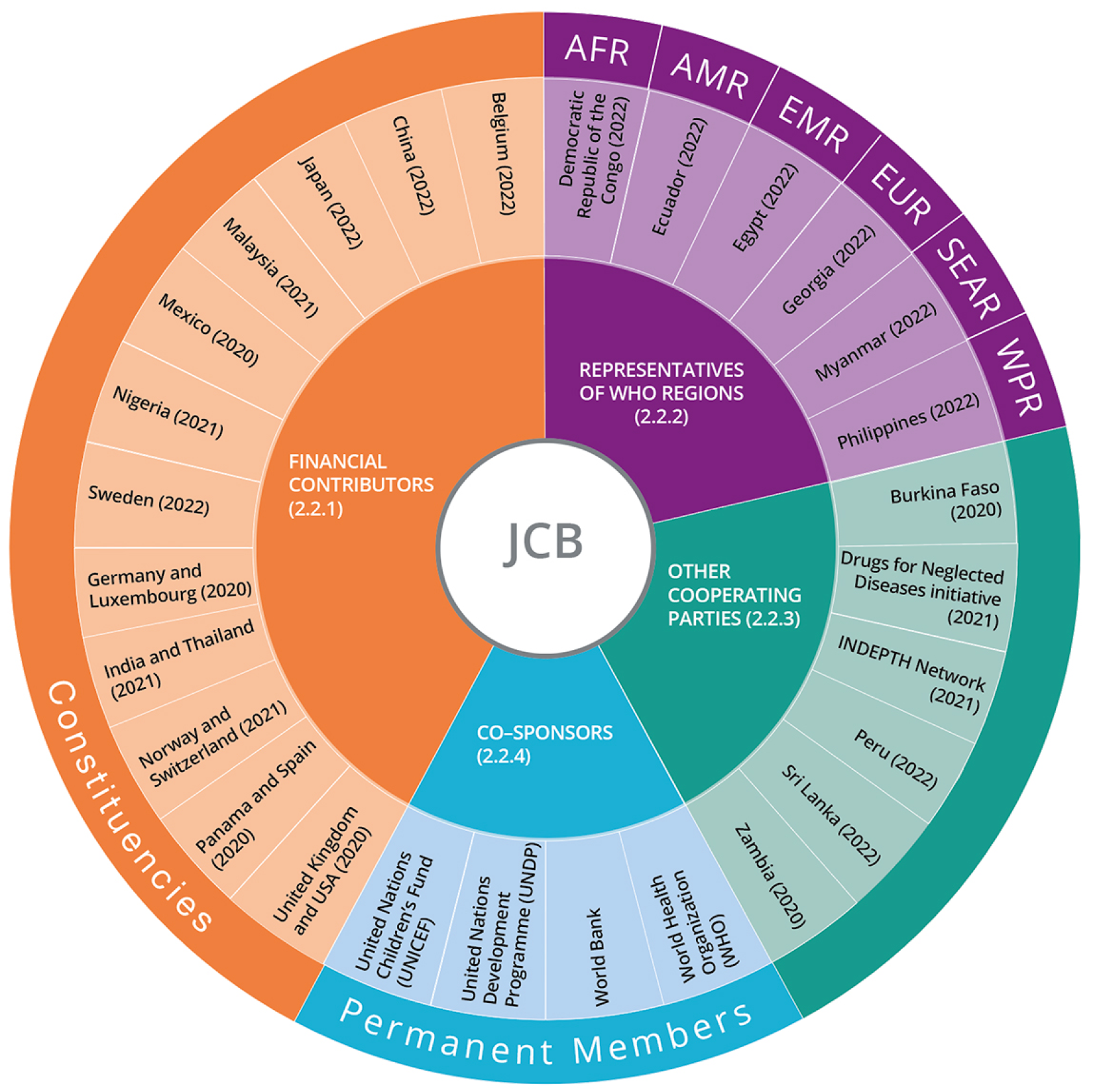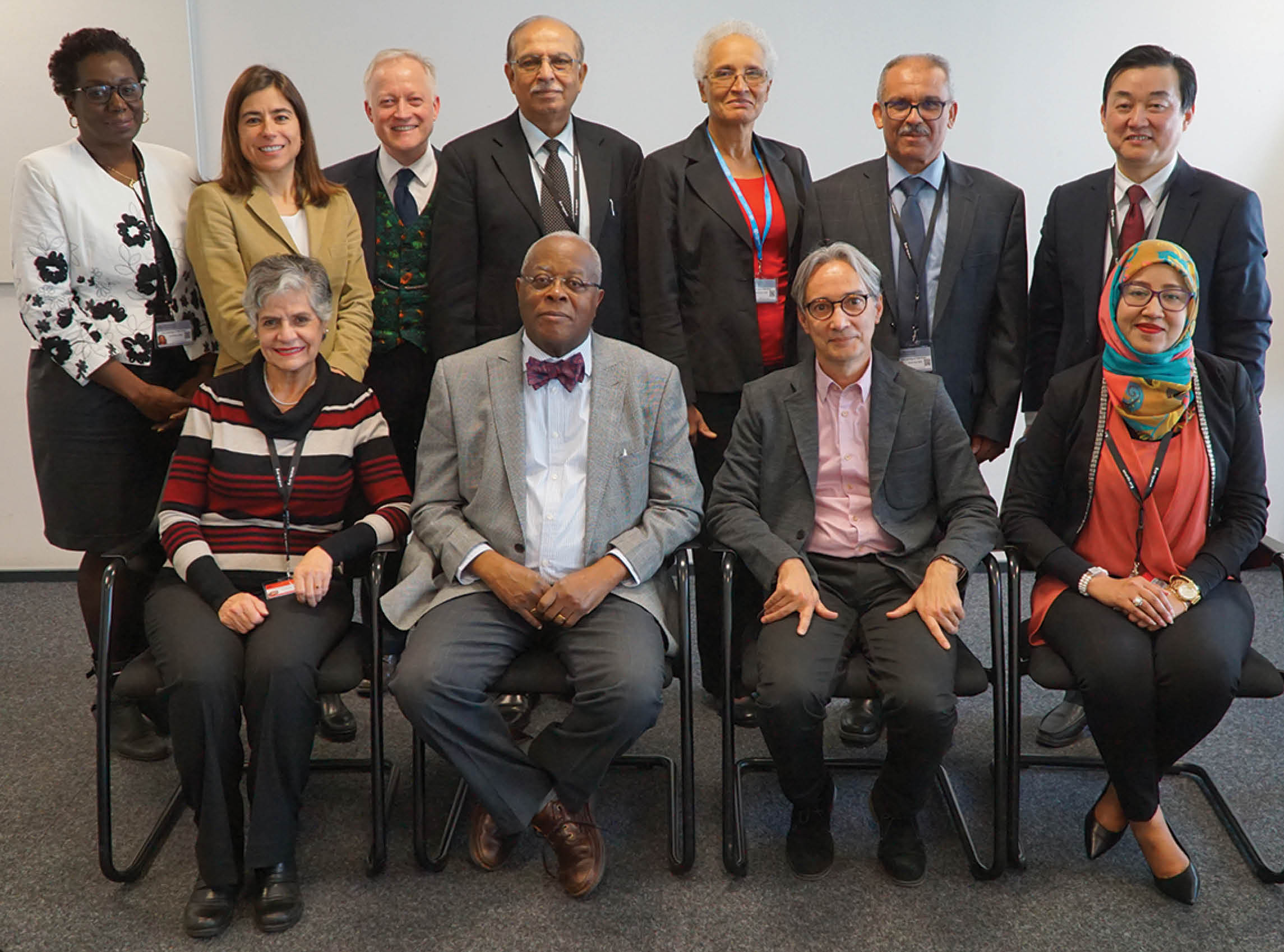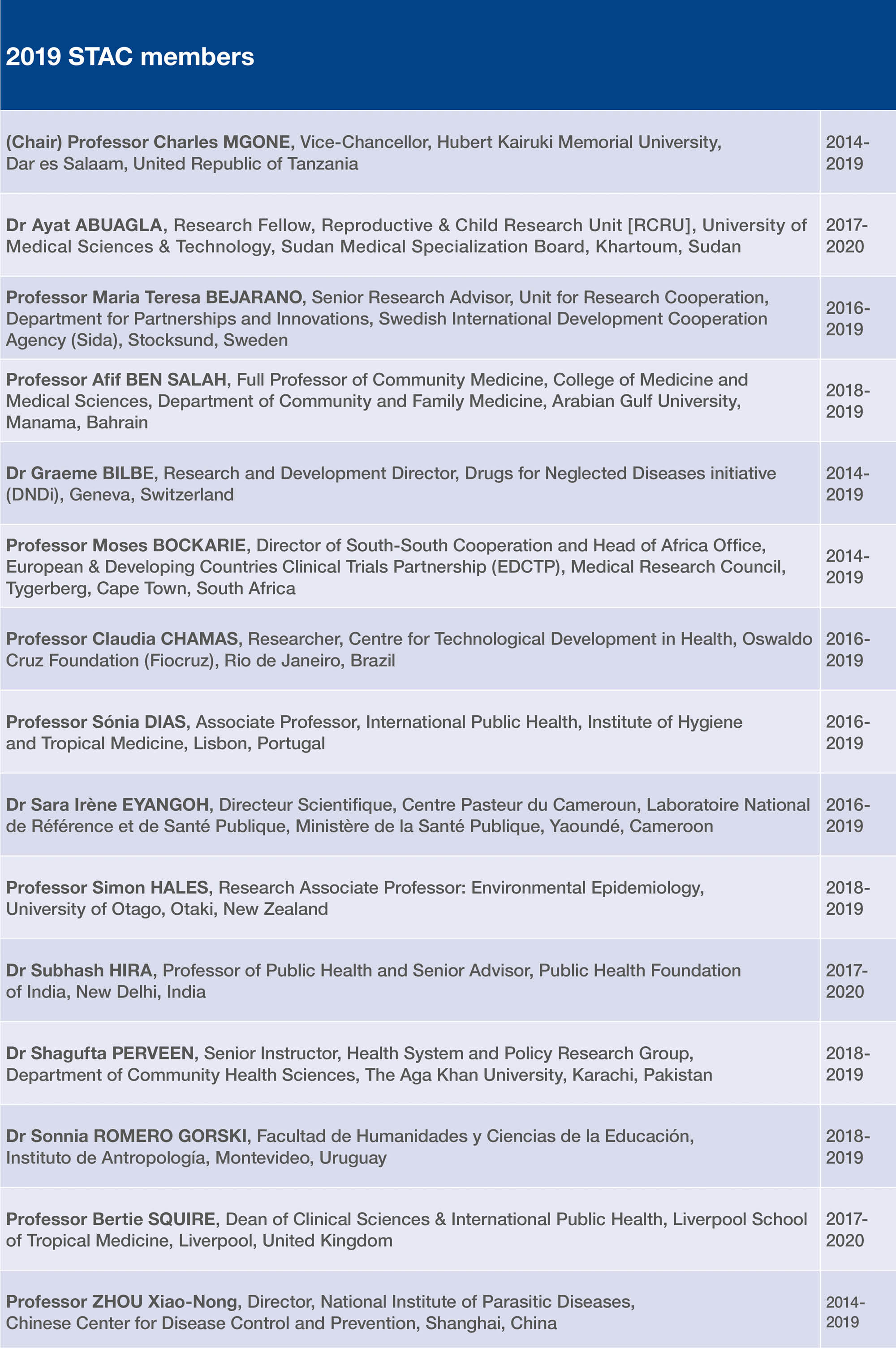


Governance,
financials and
performance

Migrants in Cox’s Bazaar, Bangladesh

Governance and management
Joint Coordinating Board
Standing Committee
Scientific and Technical Advisory Committee
Scientific Working Groups
TDR is co–sponsored by UNICEF, UNDP, the World Bank and WHO, and it is through these international, multilateral organizations that TDR has such an extensive reach and
support. WHO acts as the executing agency of the Programme and provides close ties with its departments for a continuous loop of research informing policy and policy informing research, which in turn supports planning and priority setting at international, regional and national levels.
TDR’s top governing body is its Joint Coordinating Board (JCB), which includes a mix of representatives from all WHO regions, including those who contribute financial resources, as well as non-State actors (see Figure 2).
A Standing Committee composed of representatives from the four co–sponsoring agencies, the Chair and the Vice–Chair of the JCB, the Chair of the Scientific and Technical Advisory Committee (STAC), one representative from the JCB resource contributors group (a JCB member under paragraph 2.2.1
STAC is TDR’s overarching advisory body, as foreseen in the Memorandum of Understanding, which oversees the scientific and technical strategies, directions and priorities of TDR.
In addition, the TDR Secretariat convenes scientific working groups to review and provide advice on the prioritization of proposed activities and the selection of projects for funding,
TDR’s overall management responsibility is ensured
by the TDR Special Programme Coordinator, Dr Soumya Swaminathan, who heads WHO’s Science Division as
Chief Scientist. Day–to–day management is provided by
the TDR Director. Thirty full–time staff and additional project-specific short-term staff come from all regions of the world.
The Board comprises 28 members: 12 members selected by the resource contributors to the Programme (including five constituencies of two or more governments sharing one seat); six government representatives chosen by the six regional committees of WHO; six members representing other cooperating parties selected by the JCB itself; and the four co–sponsoring agencies.
of the TDR Memorandum of Understanding–MOU), and one representative from a disease endemic country (which may be a JCB member under any paragraph of the TDR MOU), provides guidance and oversight on an ongoing basis.
STAC provides its recommendations to the JCB and the TDR Secretariat. The Committee includes up to 15 internationally recognized scientists, with members serving in their personal capacities to represent a range of research disciplines.
to review and evaluate progress in that regard and make recommendations to the Secretariat. Reviews cover the three core areas of TDR: Research for implementation, strengthening research capacity and global engagement.
Figure 2 JCB membership
(as of 1 January 2019)
WHO regions (Regional Offices)
AFR: Africa
AMR: Americas


TDR Director John Reeder and STAC Chair Charles Mgone, centre front, with 2019 STAC members

EMR: Eastern Mediterranean
EUR: Europe
SEAR: South–East Asia
WPR: Western Pacific

